Jeu de la Géographie
“Jeu de Géographie” educational playing cards etched by Stefano Della Bella and published in c.1644.
Extremely scarce “Jeu de Géographie” playing cards, one of several educational sets etched by Stefano Della Bella (1610-1664) and published by Henry le Gras, c.1644. The cards bear personifications of countries or continents, with allegorical figures. In this set the suit symbols have not been included, but the intention was that the four suits represent the four known continents: hearts are Europe; diamomds are Africa; clubs are America, and spades are Asia.
Each card has on its upper half a design or figure in a national costume, emblematic of a geographical division of the globe. Below are the title and an account of the place represented. The supposition that these cards could be used for ordinary play is illusory. Their primary purpose is instructive.
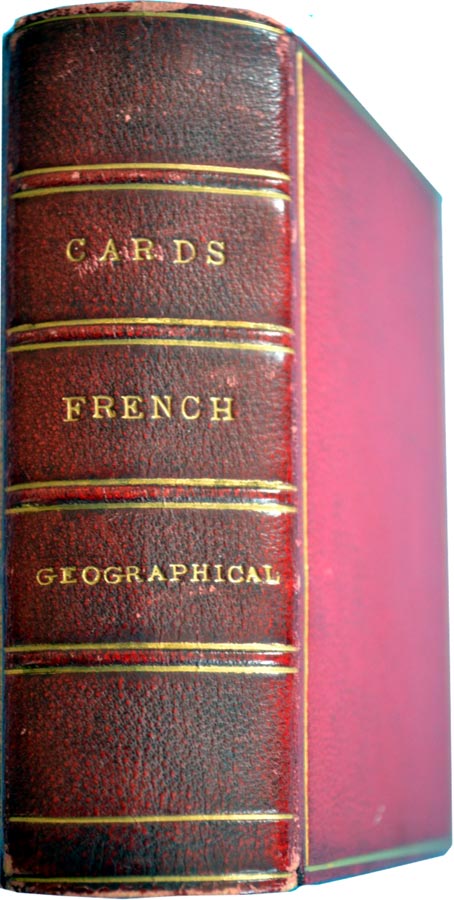
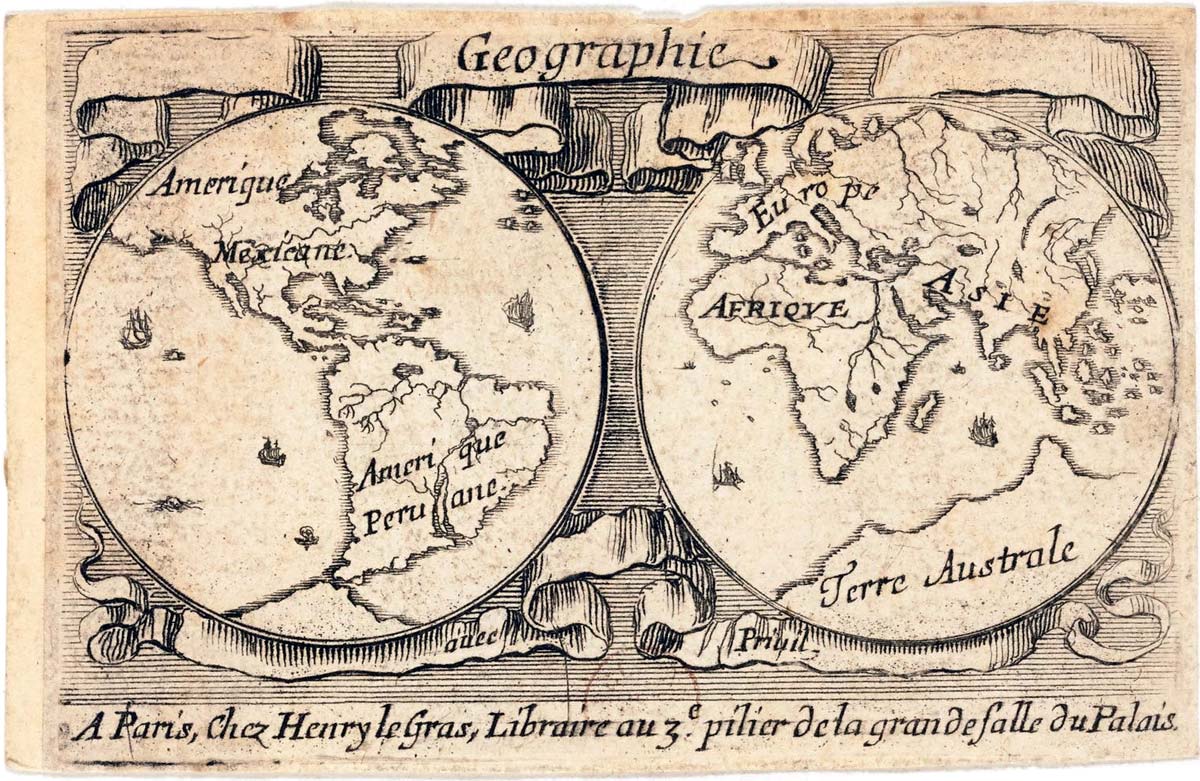
Above: “Jeu de Géographie” educational playing cards etched by Stefano Della Bella (1610-1664) and published by Henry le Gras, c.1644. The title card bears a planisphere. The cards are unsuited but with indices 1 to 10, the court cards are not indexed. All cards are hand coloured on pasteboard. Total 52 cards + title card. The cards in this set have had borders trimmed and were mounted and bound in Red Morocco leather.
REFERENCES and CREDITS
Images and notes kindly contributed by John Sings - www.gamesetal.net►
Several complete sets (coloured or uncoloured, with or without suit signs) can be found on the British Museum website. For example here or here►
Coloured without suit signs: Bibliothèque Nationale de France►
Uncoloured with suit signs: Bibliothèque Nationale de France►
Facsimile Edition by Lo Scarabeo, 2004
A facsimile edition was produced by Lo Scarabeo in 2004 in which suit signs and indices are included. See the Box►
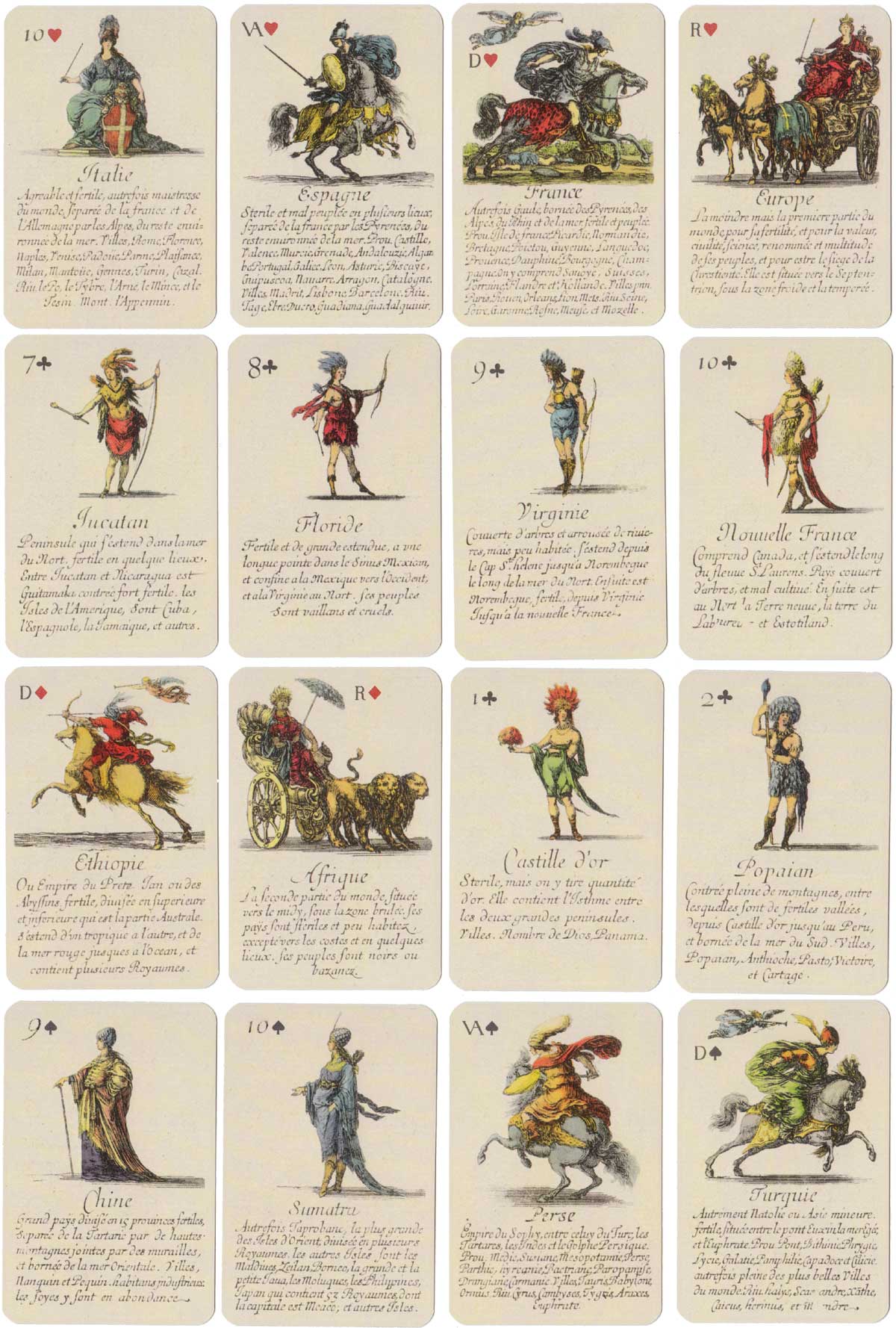
Above: cards from facsimile edition titled ‘Le Roi Soleil’ published by Lo Scarabeo, Torino, 2004. Images courtesy Rex Pitts.
By Ann and John Sings
United Kingdom • Member since December 22, 2021 • Contact
Articles and contributions by Ann & John Sings.

Leave a Reply
Your Name
Just nowRelated Articles
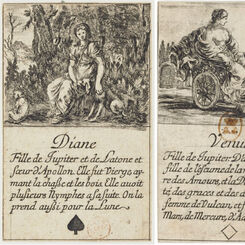
Instructive and Educational Playing Cards
Playing cards with an educational and instructive purpose first trended in mid-17th century France, ...
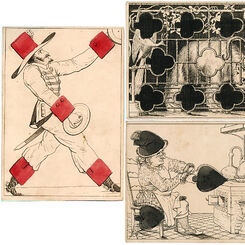
Baron Louis Atthalin’s Transformation Playing Cards, 1817
Baron Louis Atthalin (1784-1856) designed these cards whilst on a sea crossing from Palermo to Marse...
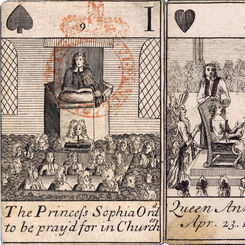
Royal Cards Reign of Queen Anne
“Royal Cards Reign of Queen Anne” cover historical events, both honourable and treacherous, during t...
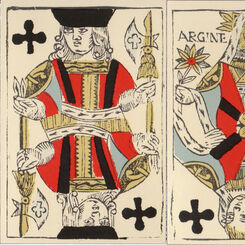
“Deck with French suits”
A facsimile of an early 19th century French-suited deck from the collection of F.X. Schmid.

Jeu Mythologique
“Jeu Mythologique” facsimile 18th century pack by J M Simon, 1983.
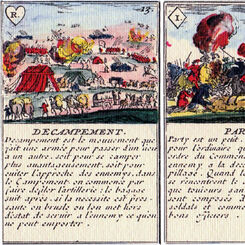
Le Jeu de la Guerre
Facsimile of “Le Jeu de la Guerre” designed by Gilles de la Boissière in 1698.
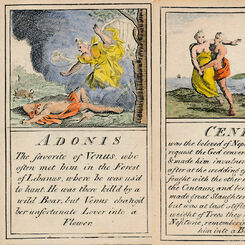
Pantheon or Heathen Mythology
Pantheon or Heathen Mythology cards for instruction of youth, c.1770.
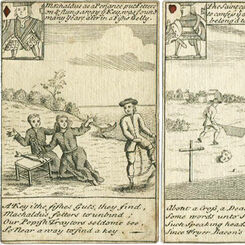
Illustrated Playing Cards, c.1740
Illustrated playing cards featuring comical engravings and rhymes about saints, c.1740.

Geographical Playing Cards, c.1682
Geographical playing cards sold by Henry Brome, second edition, c.1682.
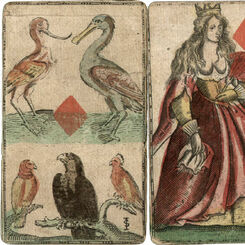
XVII Century Engraved Animal Cards
Anonymous French-suited German engraved cards c1610 to 1650.
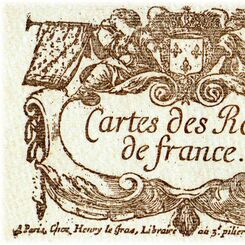
Rois de France
Cartes des Rois de France (1644) facsimile edition by Edizioni del Solleone, 1986.
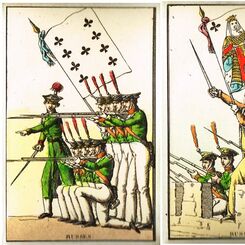
Jeu des Drapeaux c.1816
“Jeu des Drapeaux” commemorating Napoleon’s greatest battles, c.1816.

Forrest Cards, c.1750s
Hand-coloured Forrest Cards produced for “Young Gentlemen & Ladys who are Lovers of Ingenuity”, c.17...
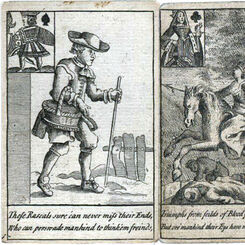
Delightful Cards, c.1723
Delightful Cards, containing variety of entertainment for young Ladies and Gentlemen c.1723.
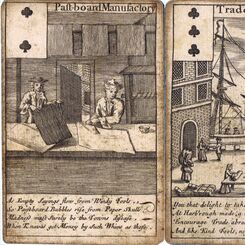
Bubble Cards, 1720
Bubble Cards - known as “All the Bubbles”, c.1720.
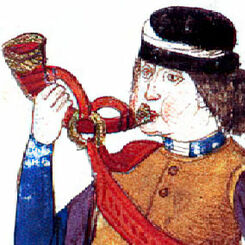
Flemish Hunting Deck
Set of medieval playing cards with King, Queen, Knave and numeral cards from one to ten in each of f...
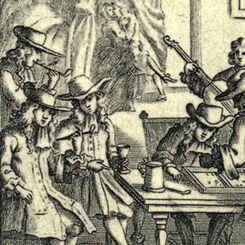
William Warter
William Warter's Proverbial Cards, which carry illustrations of old English proverbs, were first pub...
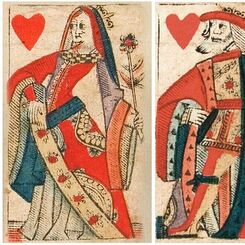
Pierre Marechal
Rouen became an important centre for card-making whose influence extended far afield. Cards from Rou...
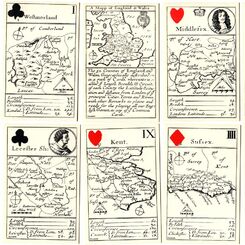
Robert Morden’s Playing Cards
The 52 Counties of England and Wales described as a pack of cards first published in London in 1676....

16th Century French Playing Cards based on Illustrations by Gurney Benham
This pack of cards by Rose & Pentagram is said to be based off Pierre Marechal, Rouen pack from the ...
Most Popular
Our top articles from the past 60 days


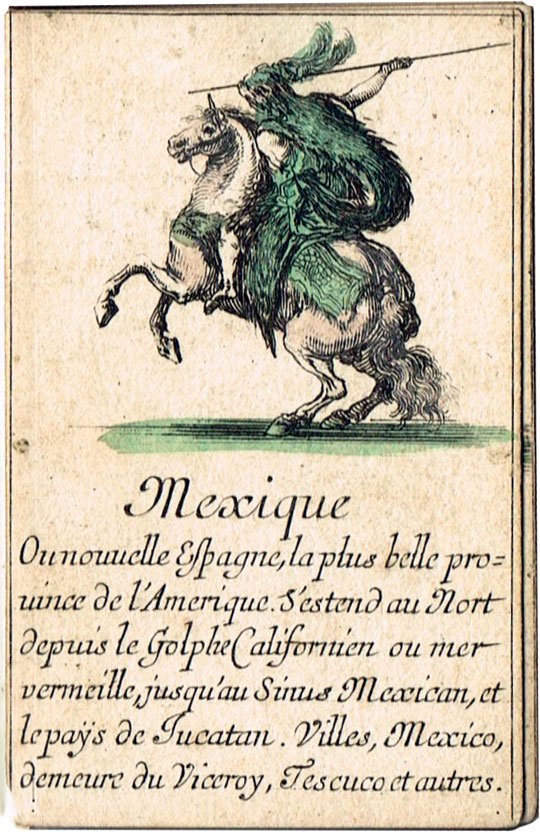
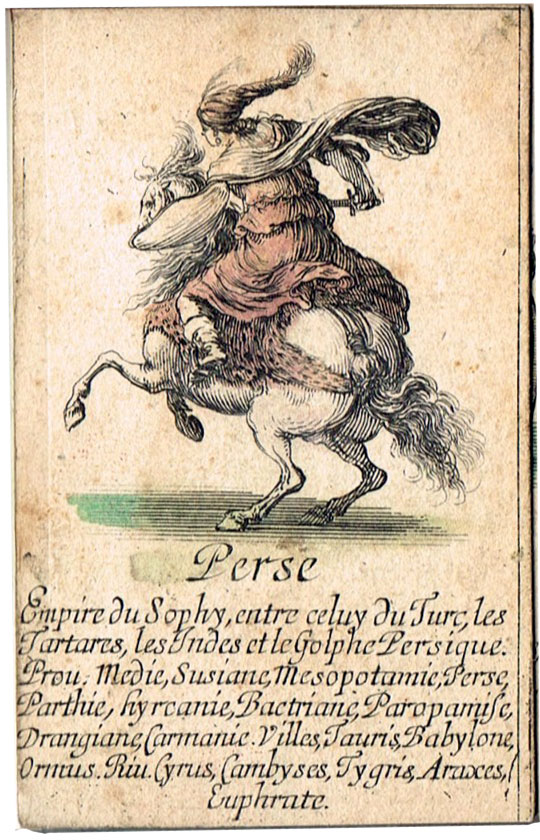
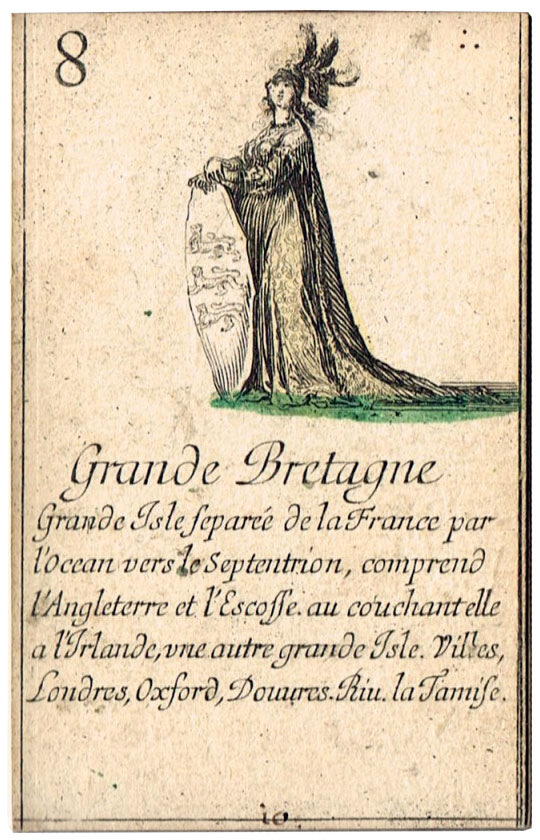
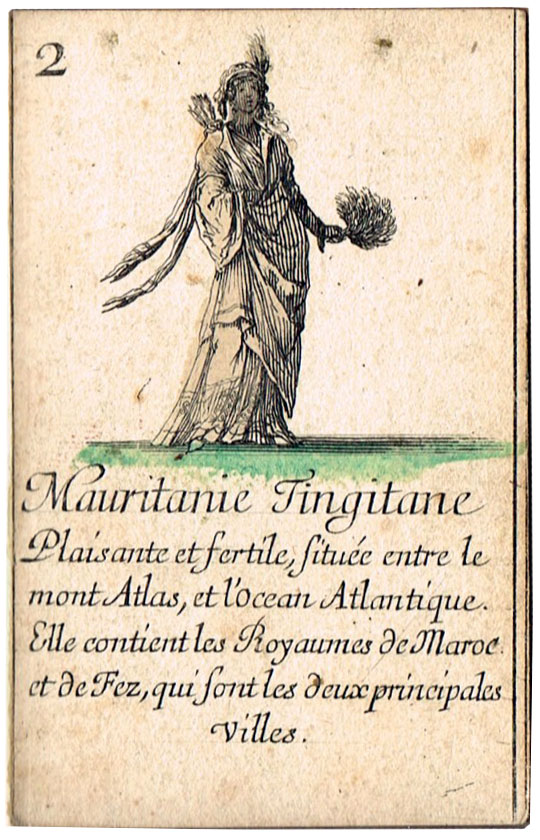

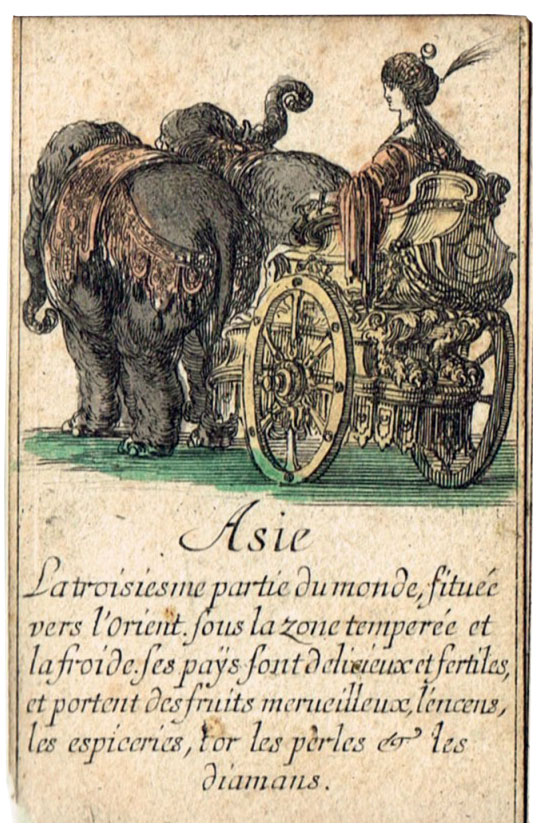
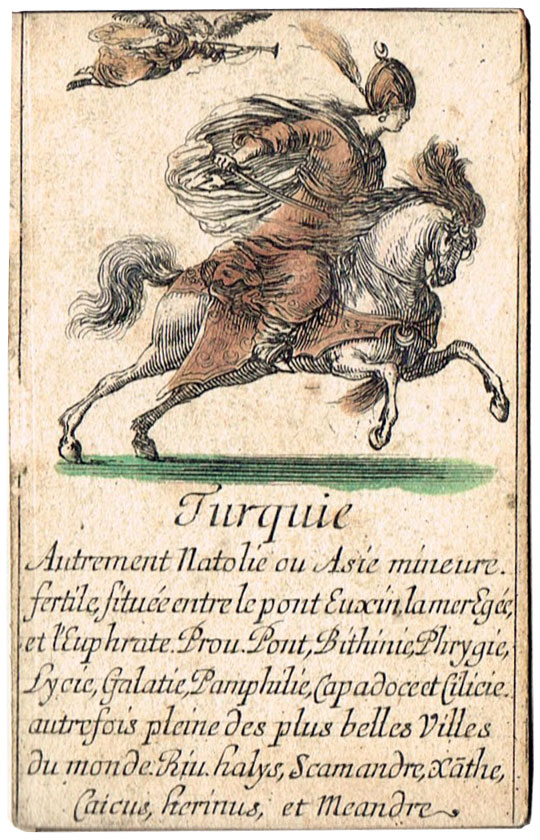
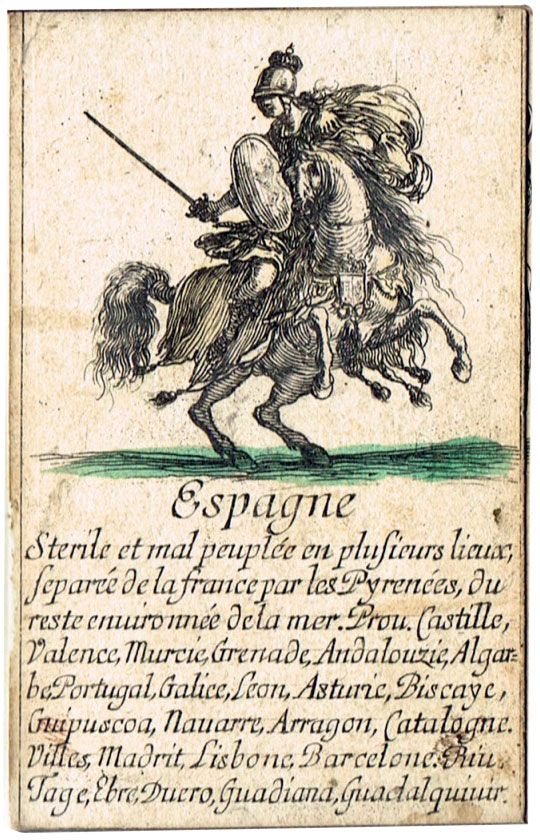
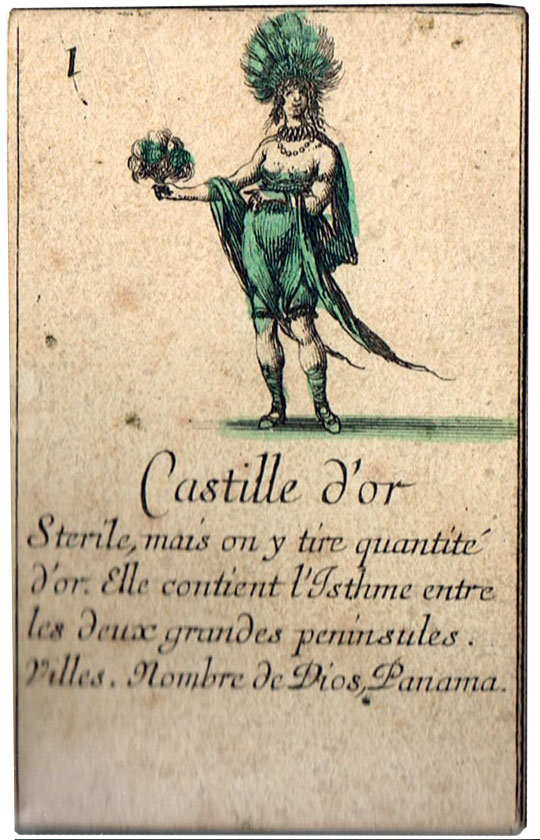
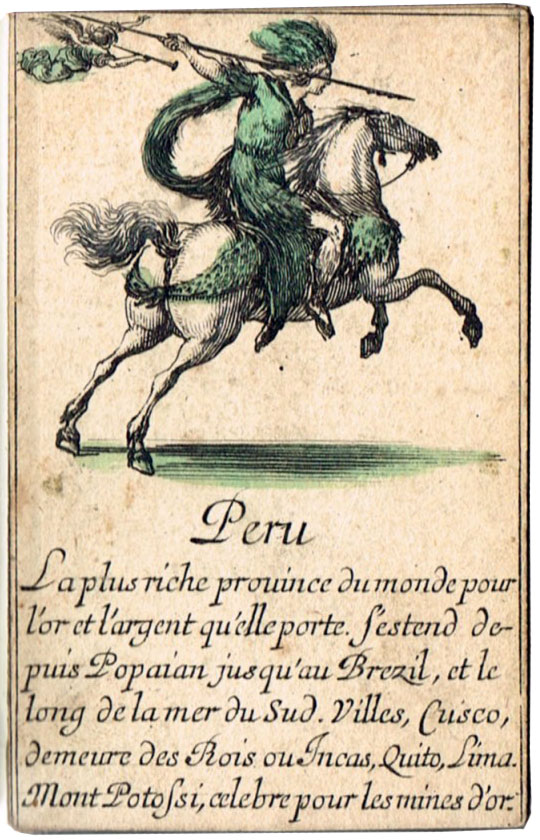
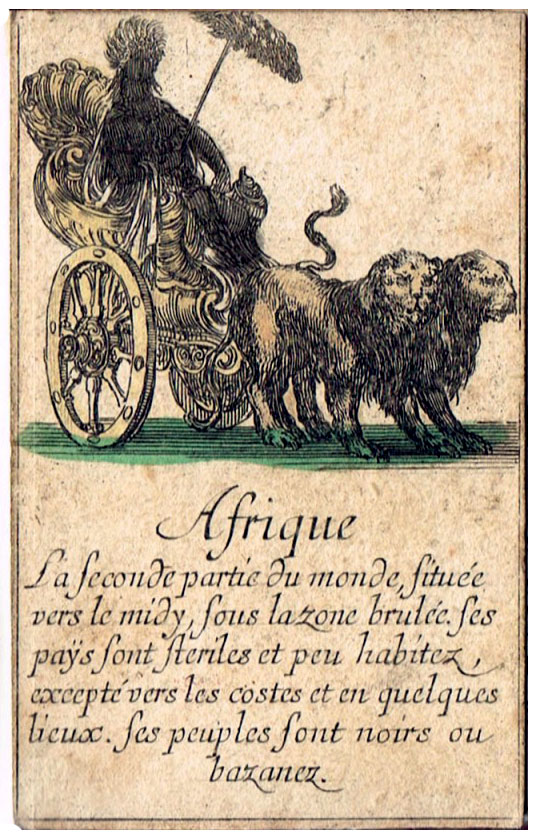


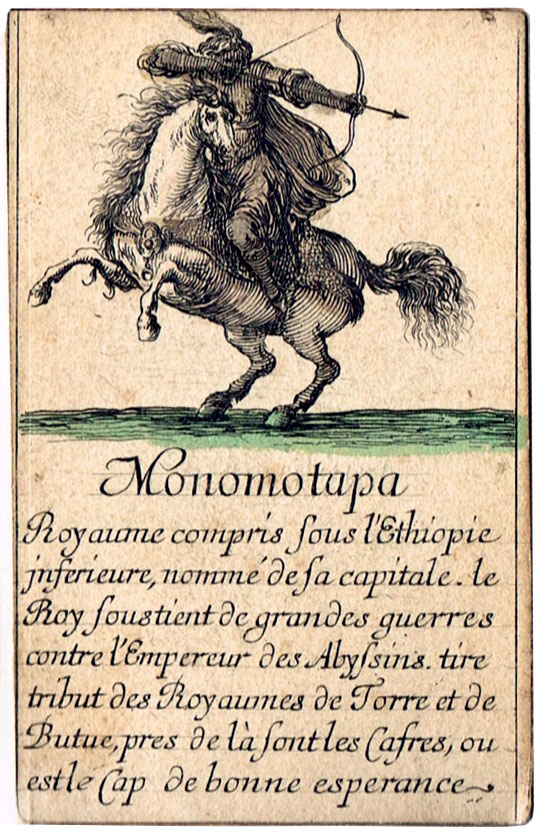
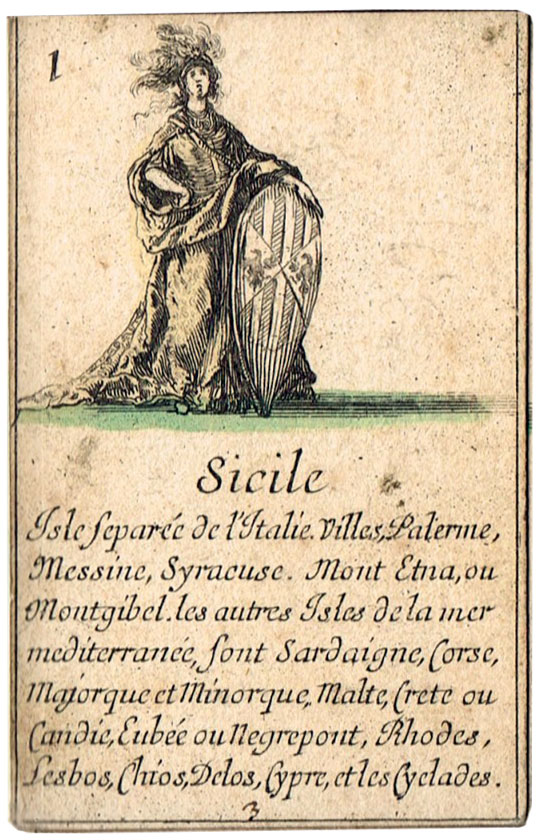
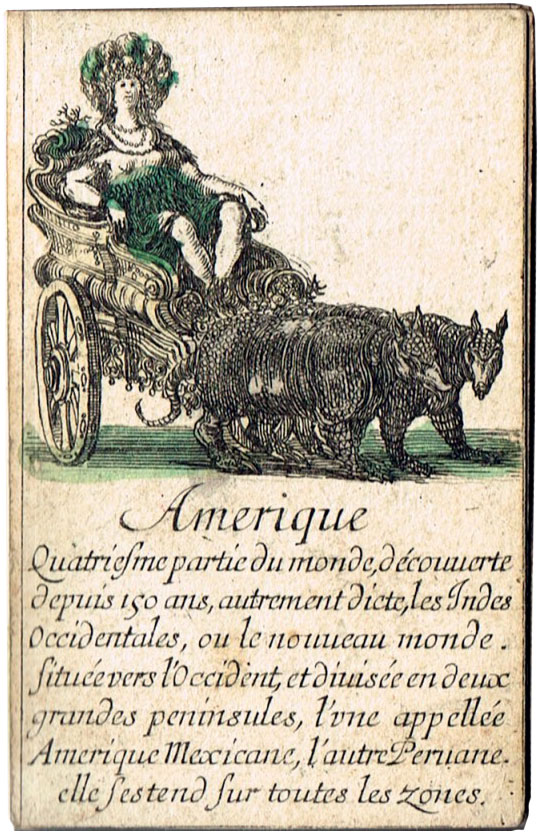
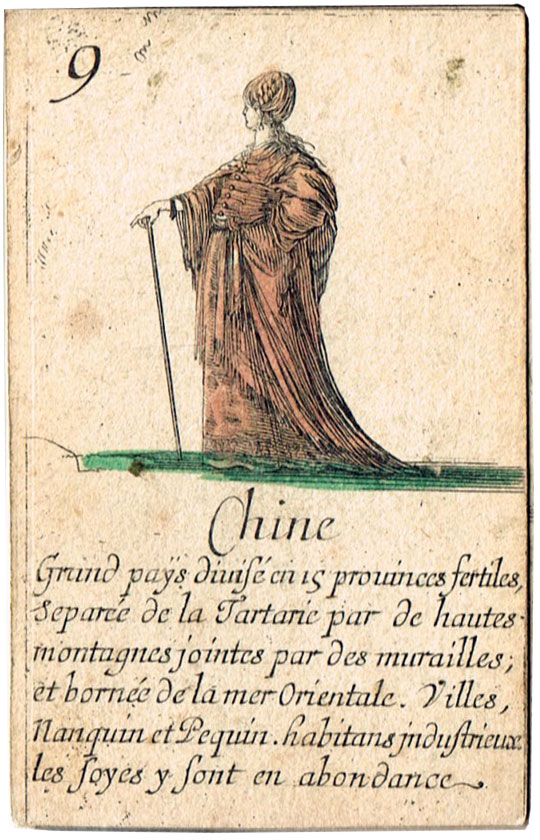
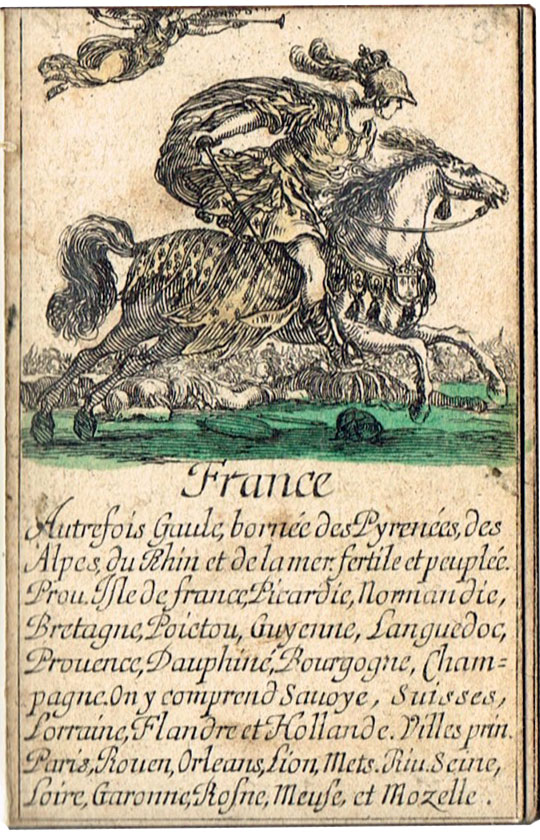
 Your comment here. Your comment here. Your comment here. Your comment here. Your comment here. Your comment here. Your comment here. Your comment here. Your comment here. Your comment here. Your comment here. Your comment here. Your comment here. Your comment here. Your comment here. Your comment here. Your comment here. Your comment here. Your comment here. Your comment here. Your comment here. Your comment here. Your comment here. Your comment here. Your comment here. Your comment here. Your comment here. Your comment here. Your comment here. Your comment here. Your comment here. Your comment here.
Your comment here. Your comment here. Your comment here. Your comment here. Your comment here. Your comment here. Your comment here. Your comment here. Your comment here. Your comment here. Your comment here. Your comment here. Your comment here. Your comment here. Your comment here. Your comment here. Your comment here. Your comment here. Your comment here. Your comment here. Your comment here. Your comment here. Your comment here. Your comment here. Your comment here. Your comment here. Your comment here. Your comment here. Your comment here. Your comment here. Your comment here. Your comment here.




















